Musée Fabre, Montpellier
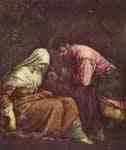 Judah and Tamar, Jacopo Bassano
Judah and Tamar, Jacopo Bassano

View of the Village, Frédéric Bazille

Portrait of Alphonse Tissie, Frédéric Bazille
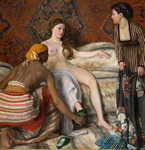
The Toilet, Frédéric Bazille

Young nude man lying on the grass, Frédéric Bazille
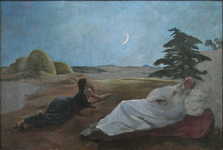
Ruth and Boaz, Frédéric Bazille

The Wrath of Achilles, François-Léon Benouville
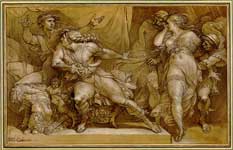
Achilles and Briseis, Giuseppe Cades
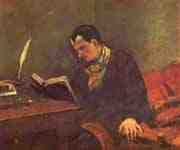 Portrait of Baudelaire, Gustave Courbet
Portrait of Baudelaire, Gustave Courbet
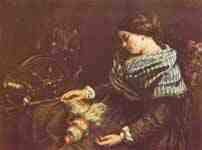
Sleeping Spinner, Gustave Courbet
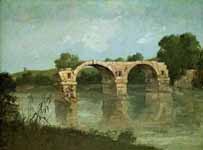
The Bridge at Ambrussum, Gustave Courbet
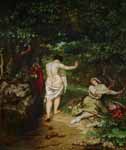
The Bathers, Gustave Courbet
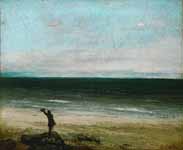
The Beach at Palavas, Gustave Courbet
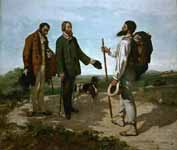
The Meeting or Bonjour, Monsieur Courbet, Gustave Courbet

Charity, Jean Cousin the Elder

The judgment of Midas , Emile Levy

The Good Samaritan, Charles André van Loo
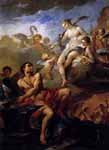
Venus Demanding Arms from Vulcan for Aeneas, Charles-Joseph Natoire

Women at the Fountain, Dominique Louis Féréol Papety
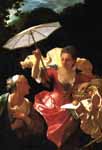
Vertumnus and Pomona, Jean Ranc
 Studies on » Disputa ", Raphael
Studies on » Disputa ", Raphael
 Studies on » Disputa ", Raphael
Studies on » Disputa ", Raphael
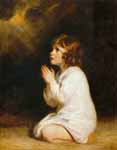
The Infant Samuel, Sir Joshua Reynolds
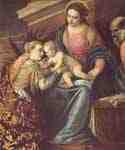
Mystic Marriage of St. Catherine, Paolo Veronese
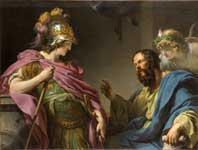
Alcibiades Being Taught by Socrates, François-André Vincent
The Musée Fabre is a museum in the southern French city of Montpellier, capital of the Hérault département.
The museum was founded by François-Xavier Fabre, a Montpellier painter, in 1825. Beginning in 2003, the museum underwent a 61.2 million euro renovation, which was completed in January 2007. It is one of the main sights of Montpellier and close to the city's main square, the Place de la Comédie. The museum's national importance is recognised by it being classified as a Musée de France by the French Ministry of Culture.
History
The town of Montpellier was given thirty paintings in 1802 which formed the basis of a modest municipal museum under the Empire, moving between various temporary sites. In 1825, the town council accepted a large donation of works from Fabre and the museum was installed in the refurbished Hôtel de Massillian, officially opened on 3 December 1828. Fabre's generosity led others to follow his example, notably Antoine Valedau who donated his collection of Dutch and Flemish masters to the city. On the death of Fabre in 1837, a legacy of more than a hundred pictures and drawings completed the collection.
In 1864, Jules Bonnet-Mel, an art collector from Pézenas, bequeathed 400 drawings and 28 paintings. In 1868, Alfred Bruyas offered the works from his private gallery to the city. He is credited with having moved the museum collection into the modern era. In 1870, Jules Canonge, from Nîmes, gave a collection of more than 350 drawings. A legacy of Bruyas of more than 200 works completed his gift in 1877.
In 1968, Mme Sabatier d'Espeyran in accordance with the will of her husband, a diplomat and great bibliophile, gave to the city their hôtel particulier, built under the Third Republic along with its contents.[1]
Around 2001, the Library moved out of the complex, freeing a sizeable area and offering the chance to carry out a major modernisation and enhancement of the building. This took four years and included a whole new wing. The building re-opened in February 2007.
Collection
On display are ceramics from Greece and the rest of Europe. Furthermore, the museum has a large collection of paintings from the 17th until the 19th century, with a large representation of the luminophiles movement. There is also sculpture.
Painting from 15th to 18th century
Here are some of the most famous painters featured in the museum.
French :
Sébastien Bourdon
Nicolas Poussin (Venus and Adonis)
Simon Vouet
Gaspard Dughet
Charles Le Brun
Nicolas de Largillière
Hyacinthe Rigaud
Jean-Baptiste Oudry
Carle Van Loo
Claude Joseph Vernet
Jean-Baptiste Greuze : 9 paintings including Le Petit Paresseux, Twelfth Night Cake
Hubert Robert
Jacques-Louis David 5 paintings including Hector, Portrait of Doctor Alphonse Leroy
Outside of France :
Italy :
Jacopo Bassano
Paolo Veronese
Annibale Carracci
Alessandro Allori : 3 paintings including Venus and Cupid image
Federico Zuccari
Bernini
Il Guercino : 2 paintings
Domenichino : 2 paintings
Salvator Rosa
Luca Giordano
Mattia Preti
Francesco Guardi
Giovanni Pannini
Flanders and Holland :
Pieter Brueghel the Younger : 2 paintings
Peter Paul Rubens : 3 paintings
Jacob Isaakszoon van Ruisdael : 3 paintings
Gerrit Dou
Gabriel Metsu : 2 paintings
Gerard ter Borch
Jan Steen : 2 paintings
Adriaen van Ostade
David Teniers the Younger : 8 paintings
Spain :
Francisco Zurbarán : 2 paintings including The Angel Gabriel
Jusepe Ribera
Other :
Anton Raphael Mengs
Joshua Reynolds
Painting from the 19th and 20th century, with a number of Fauvist painters
Frédéric Bazille (Vue de village, Aigues-Mortes, La Toilette, Atelier de la rue Furstenberg)
François-Léon Benouville (The Wrath of Achilles)
Gustave Courbet 15 paintings including The Bathers or Les Baigneuses, Bonjour Monsieur Courbet
Eugène Delacroix (Fantasia, Algerian women in their room)
Kees van Dongen (Portrait of Fernande Olivier)
Raoul Dufy
Jean Hugo
Albert Marquet
Pierre Soulages
Nicolas de Staël
Claude Viallat
Maria Helena Vieira da Silva
Sculpture
Antoine Bourdelle
Jean-Antoine Houdon (Summer, Winter)
René Iché
Aristide Maillol
Germaine Richier
References
Repérages (booklet). Musée Fabre. 2007. p. 3.
----
Fine Art Prints | Greeting Cards | Phone Cases | Lifestyle | Face Masks | Men's , Women' Apparel | Home Decor | jigsaw puzzles | Notebooks | Tapestries | ...
----
Artist
A - B - C - D - E - F - G - H - I - J - K - L - M -
N - O - P - Q - R - S - T - U - V - W - X - Y - Z
Retrieved from "http://en.wikipedia.org/"
All text is available under the terms of the GNU Free Documentation License


